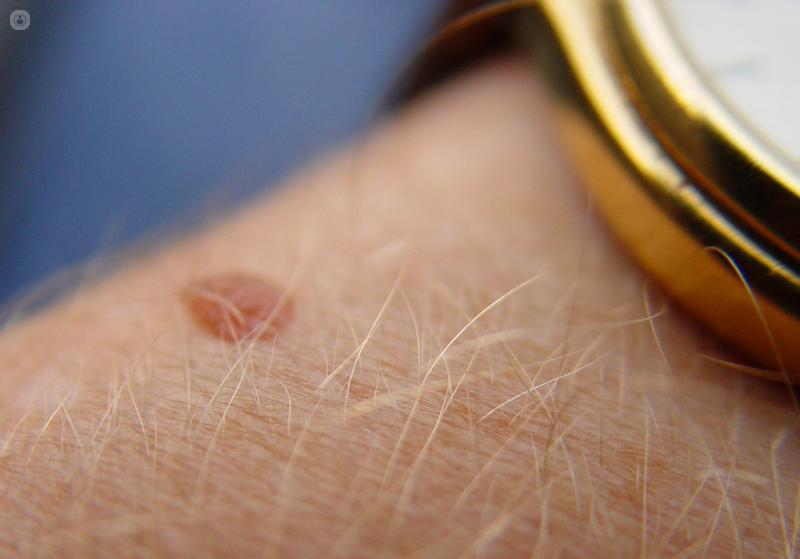Skin deep: An expert’s guide to the world’s most common cancer
Written in association with:Skin cancer is a common danger – in fact, it is the most common form of cancer in the world. The idea that an innocent-looking mole on the skin could be deadly is a worrying prospect and the fact that simply being in the sun for too long can cause it is perhaps more worrying still.
People often want to know how to spot skin cancer early and if it can be cured. Dr Raj Mallipeddi, London-based consultant dermatological surgeon, is here with the answers.

What are the early signs of skin cancer?
Signs to watch out for include new moles appearing on your skin and changes to pre-existing moles. The ABCDE guide to checking moles can be useful for spotting moles that could be cancerous and should be checked out by a specialist:
- Asymmetry – if the mole is not symmetrical, it could be cancerous
- Border – if the border of the mole becomes irregular, it is worth having it checked
- Colour changes
- Diameter of greater than 6mm
- Evolution – a mole has noticeably changed in size, shape, or colour
Other possible signs include itching or bleeding, however these are often not present.
What are the different types of skin cancer?
There are many different types of skin cancer, it being the most common form of cancer both in the UK and globally (1 in 5 people will have skin cancer at some point in their lives). The most common types (from most common to least common, and also generally from least severe to most severe) are:
Remember that while melanoma is usually detected as a new or changing “mole”, most skin cancer is not related to moles. Basal cell carcinoma may appear as a pearly pink/red nodule, a red scaly patch, or an ulcer. There is often a history of bleeding. Squamous cell carcinoma often appears as a scaly or crusty area of skin or lump, with a red inflamed base. They may be tender and bleed when rubbed.
Is skin cancer curable?
If detected early enough and treated appropriately, most skin cancers can be cured. The treatment needed depends on the type of skin cancer, so it is imperative to get a correct diagnosis. A skin biopsy is often an effective diagnostic tool to this end.
- Non-surgical treatments such as creams can be sufficient to see off some superficial skin cancers and pre-cancerous lesions like actinic keratoses. Daily application of these creams over a period of a few weeks may cause an inflammatory reaction, which can cause alarm – especially if the lesion is on the face. However, this shows that the cream is targeting the abnormal cells.
- Topical photodynamic therapy is an interesting option for superficial cancers. A special cream is applied and a dressing is put on the area for three hours, after which it is removed and a special kind of light is shone onto the affected area, creating a chemical reaction that preferentially destroys the malignant cells.
In other cases, more aggressive treatment is needed:
- Surgical removal – excision is usually recommended for most skin cancers. A margin of normal skin surrounding the tumour is removed to ensure that cells not visible to the naked eye are removed.
- Mohs micrographic surgery – a very precise method of surgical removal with up to a 99 per cent cure rate, Mohs surgery involves cutting narrow margins around the tumour to begin with, and rapidly processing them in a nearby lab to check for cancer cells not visible to the eye. This all takes place while the patient waits, and if the surgeon detects that cancer cells are still present under the microscope, more skin is removed. Mohs surgery is highly accurate for removing cancer cells, while preserving as much normal skin as possible, and may potentially limit any scarring or disfigurement.
- Radiotherapy – radiation is used to destroy the tumour. However, it does not differentiate between cancer cells and healthy cells (although healthy cells are more likely to recover from the damage). Radiotherapy is often used if surgery is not an option.
If you require expert assessment and treatment for moles and/or skin cancer, don't hesitate to make an appointment with Dr Raj Mallipeddi via his Toip Doctors profile today.

